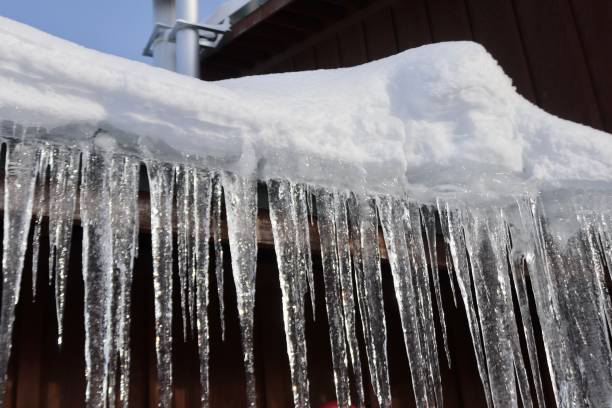Tips to Protect Your Pipes from Freezing: Professional Tips
Tips to Protect Your Pipes from Freezing: Professional Tips
Blog Article
This article listed below in relation to Winter Plumbing Precautions: Preventing Frozen Pipes is exceptionally attention-grabbing. You should investigate it.

Winter can damage your pipes, especially by freezing pipelines. Right here's exactly how to prevent it from taking place and what to do if it does.
Introduction
As temperature levels drop, the risk of icy pipes rises, possibly causing costly repairs and water damages. Comprehending how to stop frozen pipes is vital for property owners in cool climates.
Avoidance Tips
Protecting vulnerable pipelines
Cover pipes in insulation sleeves or make use of heat tape to safeguard them from freezing temperature levels. Focus on pipelines in unheated or outside locations of the home.
Heating techniques
Keep indoor spaces effectively heated, particularly locations with pipes. Open up closet doors to allow warm air to distribute around pipelines under sinks.
Just how to recognize frozen pipelines
Try to find lowered water circulation from taps, unusual odors or sounds from pipelines, and visible frost on exposed pipes.
Long-Term Solutions
Architectural adjustments
Take into consideration rerouting pipelines away from outside walls or unheated areas. Include additional insulation to attics, basements, and crawl spaces.
Updating insulation
Purchase top quality insulation for pipelines, attic rooms, and walls. Proper insulation assists maintain regular temperatures and decreases the threat of frozen pipelines.
Safeguarding Exterior Plumbing
Garden hoses and outdoor taps
Separate and drain pipes garden tubes prior to winter months. Mount frost-proof spigots or cover outside faucets with insulated caps.
Understanding Icy Pipes
What triggers pipelines to ice up?
Pipes freeze when revealed to temperatures listed below 32 ° F (0 ° C) for extended periods. As water inside the pipelines ices up, it increases, putting pressure on the pipe walls and possibly triggering them to break.
Threats and problems
Icy pipelines can bring about water supply disruptions, building damages, and pricey repairs. Ruptured pipelines can flooding homes and create comprehensive structural damage.
Signs of Frozen Pipes
Recognizing icy pipes early can prevent them from breaking.
What to Do If Your Pipelines Freeze
Immediate activities to take
If you presume frozen pipelines, maintain faucets available to soothe pressure as the ice melts. Make use of a hairdryer or towels soaked in warm water to thaw pipes slowly.
Verdict
Avoiding frozen pipelines requires proactive procedures and fast responses. By recognizing the causes, indications, and preventive measures, home owners can secure their plumbing during cold weather.
5 Ways to Prevent Frozen Pipes
Drain Outdoor Faucets and Disconnect Hoses
First, close the shut-off valve that controls the flow of water in the pipe to your outdoor faucet. Then, head outside to disconnect and drain your hose and open the outdoor faucet to allow the water to completely drain out of the line. Turn off the faucet when done. Finally, head back to the shut-off valve and drain the remaining water inside the pipe into a bucket or container. Additionally, if you have a home irrigation system, you should consider hiring an expert to clear the system of water each year.
Insulate Pipes
One of the best and most cost-effective methods for preventing frozen water pipes is to wrap your pipes with insulation. This is especially important for areas in your home that aren’t exposed to heat, such as an attic. We suggest using foam sleeves, which can typically be found at your local hardware store.
Keep Heat Running at 65
Your pipes are located inside your walls, and the temperature there is much colder than the rest of the house. To prevent your pipes from freezing, The Insurance Information Institute suggests that you keep your home heated to at least 65 degrees, even when traveling. You may want to invest in smart devices that can keep an eye on the temperature in your home while you’re away.
Leave Water Dripping
Moving water — even a small trickle — can prevent ice from forming inside your pipes. When freezing temps are imminent, start a drip of water from all faucets that serve exposed pipes. Leaving a few faucets running will also help relieve pressure inside the pipes and help prevent a rupture if the water inside freezes.
Open Cupboard Doors
Warm your kitchen and bathroom pipes by opening cupboards and vanities. You should also leave your interior doors ajar to help warm air circulate evenly throughout your home.

We were guided to that report about How To Avoid Freezing Pipes through a friend on our other web blog. Appreciated our post? Please quickly share it. Help someone else discover it. I value reading our article about Helpful Tips to Prevent Frozen Pipes this Winter.
Click Here Report this page